The booklets presented here were produced by Architectural Association students Georgia Hablutzel and Quentin Dauvergne, with tutors Sue Barr and Caroline Rabourdin for the AA Visiting School in Richelieu.
The works are the result of individual research on the town of Richelieu and its history. Both projects look at the town from a distance, allowing for new interpretations and displacements through the re-appropriation of historical documents. Quentin’s photographic work was conducted in the gardens of Versailles, which were heavily inspired by the gardens of the ideal city, whilst Georgia’s interviews were conducted on site, and merge with words written over 450 years ago by John Evelyn during his visit to the town of Richelieu.
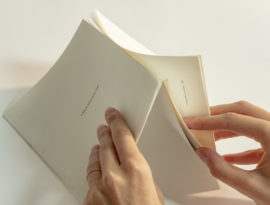
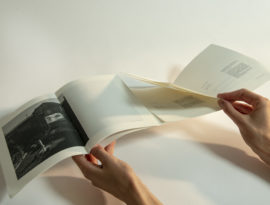
This document archives a moment in a town — a post Richelieu, Richelieu — where interviews with passers by are immeshed with the English diarist John Evelyn’s reflections on his visit to the newly built town. By reworking the descriptive text from the diary entry on the 14th September 1644, into the interviewees answers, a new exchange is imagined, where past and present converge into new possibilities for the town.
These (im)possibilities offer a new vision for the town, where sourced architectural features become superimposed onto the ritual of the everyday. Richelieu is a project which references each of our own reflections, its overlapping narratives make the impossible, probable. The images reference places from overseas, or from a street behind, pasted together to occupy a new composition for the exterior facade of the town: the reclaimed moat. The moat becomes an appendix of broken relationships, an opportunity for new overlays of programmes and realities.
Georgia Hablutzel is currently pursuing her MA Architecture at the Architectural Association, where she completed her RIBA Part I. Previously, she has worked at Pierre d’Avoine Architects, on a series of publications and design research proposals. Her printed work features in the Tate Artist Book Archive, the Architectural Association Archive and publications such as AArchitecure and Due. She is currently Co-editior of the journal AArchitecture.
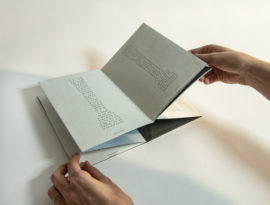
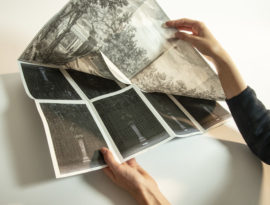
Through the fold, Tales from the Labyrinth develops a material exploration of the tensions underlined in the history and myth of Richelieu. As a printed piece, it investigates the relationship between dichotomies and dualities: what is past and what is present, what is planned and what is realised, what is fictional and what is real. A tale usually unfolds along a line, with a start and an end. Here, the tale happens simultaneously in all of these different categories, effectively blurring the dichotomies.
The project draws from the instability of the political myth crafted jointly by the Cardinal Richelieu and Louis XIII, hinging on the creation of a new form of government, and a direct filiation to figures of the past. Photographs of hidden figures in the gardens of Versailles, drawings, and extracts from Gilles Deleuze’s text The Fold, echo one another in the central absence they relate to. Tales from the Labyrinth reflects on the traces, ripples and echoes from the story of Richelieu, reaching us through space and time.
Quentin Dauvergne trained in Paris, in History of Arts at the Sorbonne, and in Architecture at the ENSA Val de Seine. He then carried on at the Architectural Association, London. His approach, characterized by in-depth contextual research, focuses on the act of revealing hidden potentials through simple and careful gestures, in order to create meaning through trans-disciplinary connections.
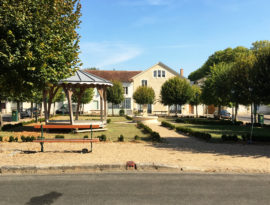
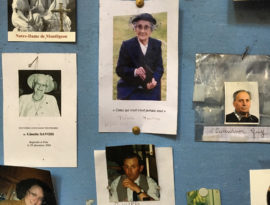
While visiting the main church in Richelieu I was touched by a panel of pinned small photos of people that had passed away in the community. On top of a blue background there where portraits of old and young people with their birth and death dates inscribed on them. Beneath a picture of a smiling elderly lady I stumbled into this particular phrase: ‘The one who believes is ‘never alone’. In my mind, this unintentional memento mori became so much more when it’s taken out of the specific context where it was originally found within its religious framework, and represents a much deeper truth. For is indeed believing in something larger than ourselves, being a shared sense of common good, or universal fraternity, or fusion with nature or whatever example you may think of, that makes us feel part of something larger and give us a sense of belonging, preventing any feeling of solitude or isolation very common to contemporary city life.
In other words, it is the shared belief that is the foundation of a culture but also the engine of the integration into a world. This panel gave me a sense of the community in Richelieu, it made me think of the actual people that live there now and made me wonder about the actual town that seems to be struck by a feeling of abandonment beyond its magnificent history.
Born in Mexico City in 1970, Santiago Borja earned his BS in architecture from Universidad Iberoamericana in Mexico City, and master’s degree in the theory and practice of contemporary art and new media from the Université Paris VIII. He holds a teaching position at the ENPEG/INBA in Mexico. He is known for creating large-scale interventions that cross cultural boundaries and contrast indigenous knowledge and crafts with contemporary theory and Modernist architecture and design. It is an exploration of lived aesthetics across both time and space.
He has participated in numerous international exhibitions namely The California- Pacific Triennial, The Hangzhou Triennial in 2016, The Chicago Architecture Biennial in 2015 and The Global Contemporary at ZKM, in Karlsruhe Germany. He has created major projects for the Villa Savoye (Poissy); Neutra VDL House (Los Angeles); Irish Museum of Modern Art; Freud Museum (London); Sonneveld House (Rotterdam); MARCO (Monterrey, Mexico) and Mies van der Rohe Pavilion (Barcelona).
Forthcoming projects include his participation at the Atelier Calder in Saché and an architectural installation for the headquarters of the French Communist Party in Paris. He has been granted with several important awards and his work has been supported by important institutions such as the Graham Foundation in Chicago, Dicréam in France, Jumex Foundation in Mexico, the Han Nefkens Foundation in Barcelona and the Marcelino Botín Foundation in Santander among others. He is a member of the SNCA-FONCA in Mexico.
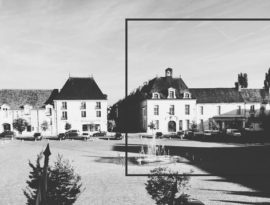
I am interested in the visual effect of the very memorable kind of repetition that reminds me of repetition in Islamic art. It is like an invitation to meditation more than anything else. And also these identical architectural folds, I had the impression I was reading a 200 page book with the introduction repeating on all the pages.
‘The book becomes just a detail within its detail.’
I was also intrigued by the psychological zone lodged between the little real reality we have and the dream.
‘The little real reality I can grasp brings a lot of significance to the dream I want to achieve.’
In a historical sense, in my opinion, this city can be related to current issues, namely that projects today still follow the same steps. The project of a city in Saudi Arabia – King Abdullah Economic City – comes to my mind, for instance.
It becomes political: the power tries to apply its dream on the dreams of others.
About four centuries after Richelieu, King Abdullah Economic City is still searching for locals.
C’est était un plaisir de vous rencontrez et d’être parmi vous dans cette seance de travail à Rechelieu.
C’est était un week end très court mais très riche au meme temps,
J’ai garder deux aspects que je trouve intéressent:
le cote visuelle qui montre une espèce de repetition très marquante qui me rappel la repetition dans l’Art Islamique, qui invite a la méditation plus que d’autre chose. Et aussi ces plis architecturaux identiques, j’avais l’impression de lire un livre de 200 pages avec l’introduction qui ce répète dans toute les pages.
‘Le livre devient juste un détail dans son détail.’
Le cote psychologique entre le peu de la réalité qu’on possède et le rêve.
‘Le peu de la real réalité que j’ai, donne beaucoup de sens au rêve que je veux atteindre.’
Historiquement, a mon sens, cette ville repend parfaitement a des questions actuelles, a savoir les meme projets aujourd’hui suivent les memes démarches, ça viens a mon esprit le projet d’une ville en Arabie Saoudite “King Abdullah Economic City”.
Au finale ça devient politique, et le pouvoir essaye d’appliquer son rêve sur les rêves des autres.
À peu près quatre siècles après Richelieu, King Abdullah Economic City est toujours a la recherche des habitants.
Mohssin Harraki‘s work has been featured in numerous exhibitions including Dot, Point, Period, at the Castelli Gallery, New York, USA in 2019. A New Humanity at the Dakar Biennial, Dakar, Senegal in 2018. matière grise, exhibition at the Imane Fares Gallery, Paris in 2017. Not new now at the Marrakech Biennial in 2016. Songs of Loss and Songs of Love, Gwangju Art Museum, South Korea in 2014. Outre Mesures et Programmes Radio at The Gallery, Noisy-le-Sec in 2011. Sentences on the Banks and other activities in Darat Al Funun, Amman in 2010.
Mohssin Harraki creates drawings, videos, installations, photography and performances; all are questioning social and political issues. The artist is just as well examining the cultural construction as the post-colonial consequences and the collective imaginary. Social and cultural contexts that are unfamiliar to him are also part of his research. He’s interested in the cultural and political history of Morocco since the proclamation of Independence and to the themes such as the genealogy and transmission of power, the birth of nationalistic ideology and the formation of the collective conscience.
The artists proceeds in general by creating a dialogue, with his peers, artists or with people he meets in the streets, as with the intervention jeûne in 2011 in Toulon. In his installations he explores themes of the book and the written word that he diverts out of their traditional contexts. Overall his art projects aim to explore the mechanisms of cultural construction, the constitution of memory and the collective imaginary.
le travail de Mohssin Harraki a été présenté dans de nombreuses expositions dont «Dot, Point, Period» , a la galerie Castelli, New York, États-Unis en 2019. «Une Nouvelle Humanité» a la Biennal de dak’art, Dakar, Sénégal en 2018. «matière grise», exposition à la Galerie Imane Fares, Paris en 2017. «Not new now» à la Biennale de Marrakech en 2016. «Songs of Loss and Songs of Love», Musée d’art de Gwangju, Corée de sud en 2014. «Outre Mesures et Programmes Radio» à La Galerie, Noisy-le-Sec en 2011. «Sentences on the Banks and other activities» à Darat Al Funun, Amman en 2010.
Mohssin Harraki travaille avec le dessin, la vidéo, l’installation, la photographie et la performance, comme autant de moyens de questionner des enjeux sociaux et politiques forts. L’artiste interroge aussi bien la construction culturelle, que les conséquences post-coloniales et les imaginaires collectifs. Il s’intéresse à des thèmes comme la généalogie, la transmission du pouvoir, et la formation de la conscience collective.
L’artiste procède en général par le dialogue, que ce soit avec ses pairs, artistes, ou avec des gens qu’il rencontre dans la rue, comme lors de son intervention « Jeûne » en 2011 à Toulon. Dans ses installations, il explore également les thématiques du livre et de l’écrit, qu’il détourne de leurs usages traditionnels. De manière globale, tous les projets de l’artiste visent à explorer les mécanismes de construction culturelle et de constitution de la mémoire et de l’imaginaire collectif.